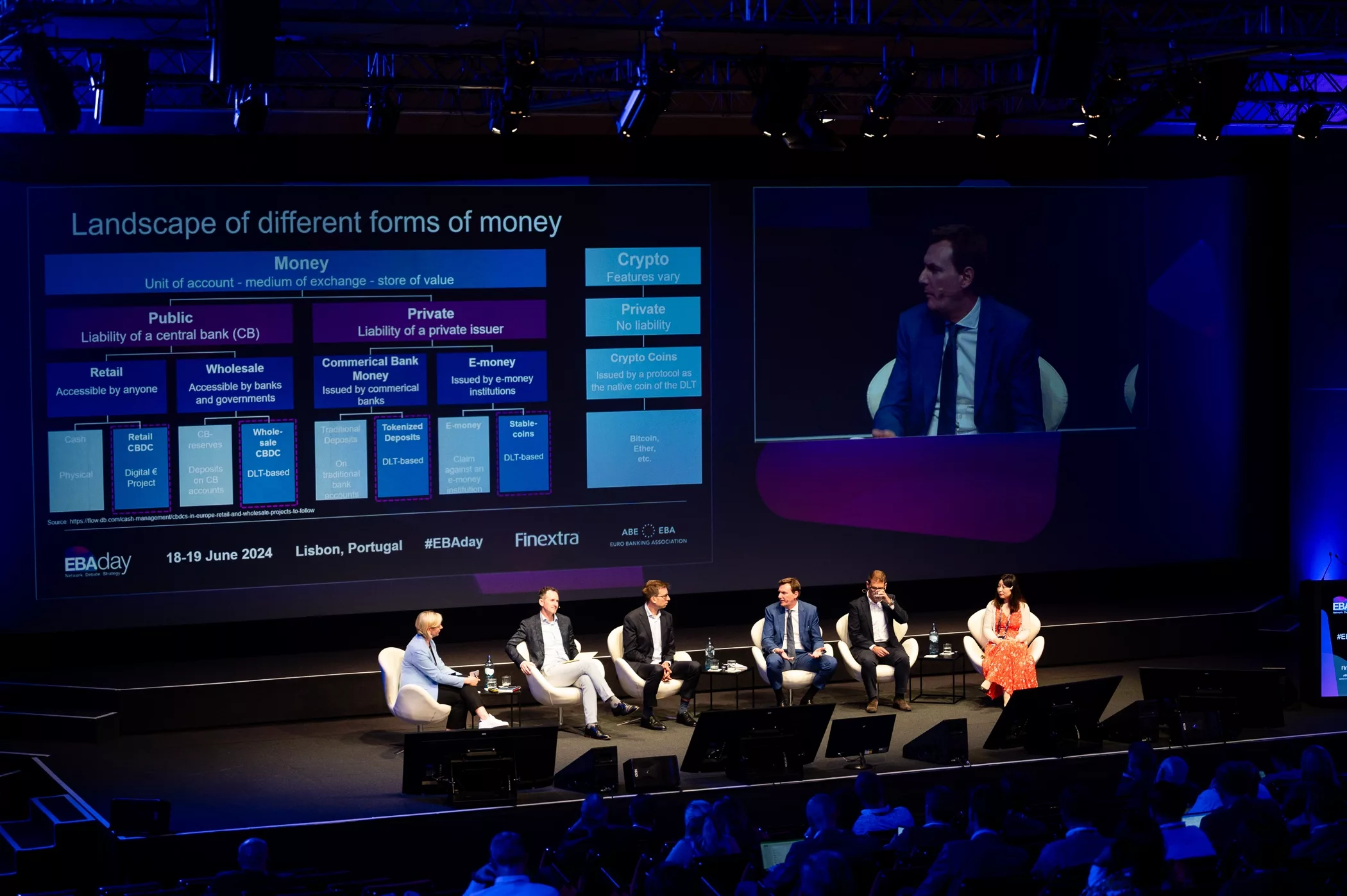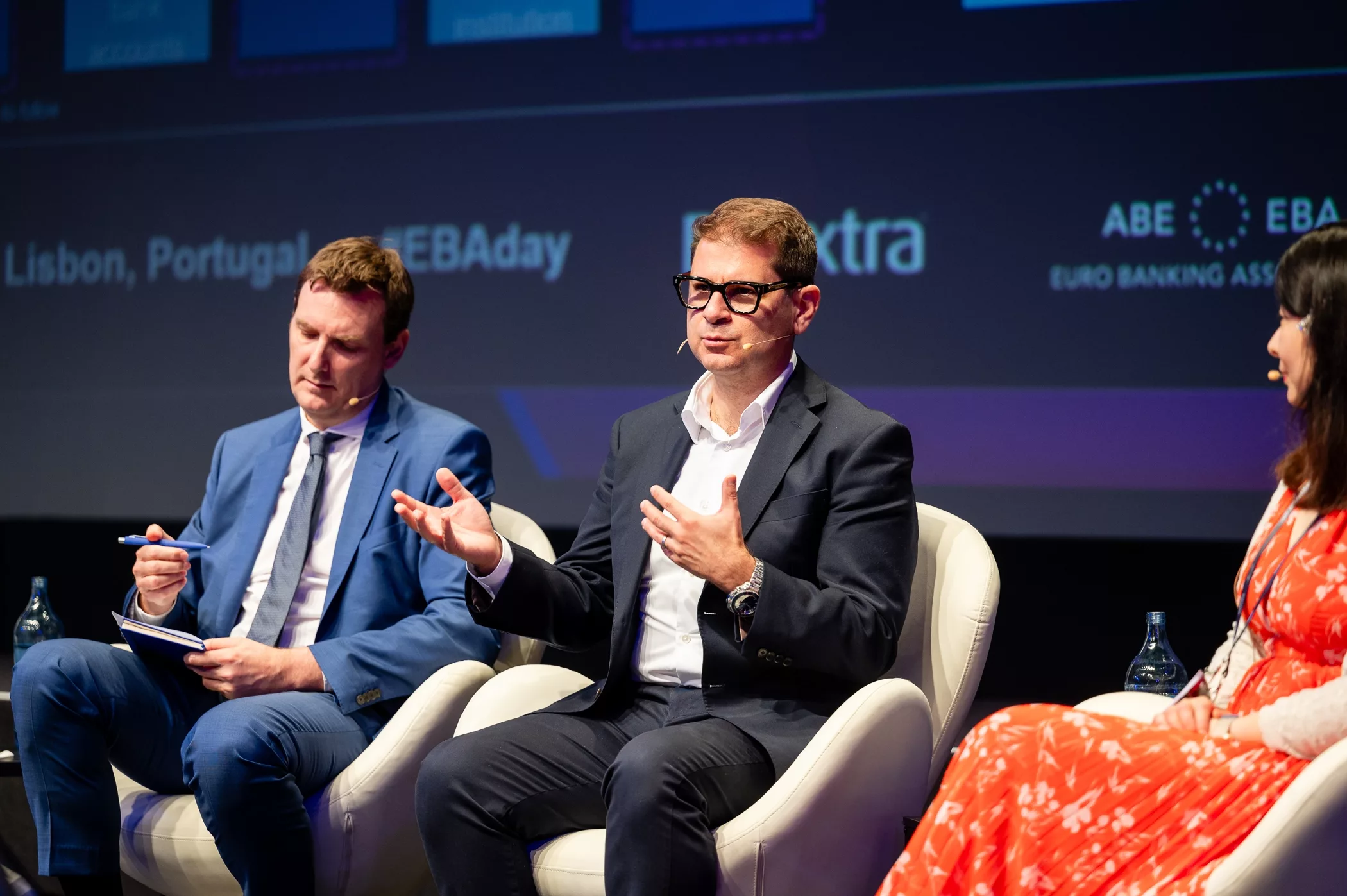How can Europe’s commercial banks and payment firms harness the power of CBDCs, tokenised commercial bank money and programmable payments? The Quant team was at the Euro Banking Association’s annual summit for leading payments and transaction banking executives last month with answers.
Members of the Euro Banking Association gathered last month in Lisbon for their annual conference. Several members of the Quant team attended – as exhibitors and speakers – to contribute to the dialogue.
Over the course of the two-day event, the Quant team met delegates at our stand to share more about our work on the Regulated Liability Network, the UK’s retail central bank digital currency, how Europe’s commercial banks and payment firms could leverage our technology to issue their own digital currencies and the power of programmability in payments.
Alongside our presence at the event, our Founder and CEO, Gilbert Verdian, joined a panel of experts in a session on day one: ‘The challenges and benefits of CBDCs, tokenised deposits and stablecoin adoption’, to discuss the benefits and risks of programmability and how likely the risk of market fragmentation is if banks were to chase after the same use cases.
Moderated by Andrea Meier, Chair of the EBA Working Group on Digital Currencies and Smart Payments, the other panelists were David Cunningham, Head of Strategy & Partnerships for Digital Assets, Treasury and Trade Solutions, Citi; Manuel Klein, Market Management Payments and Digital Currencies, Cash Management, Deutsche Bank; Alessandro Roveda, Head of Network Services Solutions, Nexi Group; and Phoebe Zhou, Head of Emerging Payments – GPS Europe, HSBC.

Meier set the scene by defining the different types of money – both public and private, to which Cunningham added: “We need to get CBDCs right. What will be the effect on commercial banks? We’re developing our own internal capability to tokenise currency and move it.”
Similarly, Klein shared that Deutsche Bank have “partnered with clients and other banks to see how we can issue our own money and implement that. We’ve also analysed how to use blockchain technology to allow 24/7 payments and programmability.”
The conversation then shifted to the benefits of tokenised deposits. Roveda began by pointing out that the industry is already digitalising with DLT but requires a new means of payment flow – this is tokenised deposits.
Gilbert began by describing Quant’s work in this space, building financial infrastructure that makes digital assets and tokenised money interoperable and transforming from electronic payments to digital.

“As a society we operate digitally, but the systems we use were designed as electronic which means our current system is not fit for purpose,” Gilbert said. “Our work with the Bank of England on Project Rosalind and more recently with the Regulated Liability Network has shown us what’s different about these new forms of money, and it comes down to programmability. By embedding logic into money, banks can automate processes, make money intelligent and create space for new types of use cases.”
Klein remarked that by having only commercial banks on a network, the missing piece is settlement. He used Project Agora as an example of a project that hopes to overcome this challenge by having commercial bank money and a settlement asset on the same network. He compared this concept to the RLN.
“We’ve had enough experiments now; we need to be issuing real value and exchanging it,” commented Cunningham. “The key tenet is interoperability – I’m sure Gilbert has some ideas on how this can be achieved.”
Gilbert agreed with Cunningham’s call for action. “Now is the time for commercial banks to seize the lead in digital money,” he pointed out. “We need to avoid further fragmentation because this will complicate payments.” He added that the other driver is CBDCs – they are coming, and banks need to be ready. The best way for banks to prepare for this is to innovate now, and work with commercial banks to build the necessary infrastructure.
But how can we move from experimentation to production? Zhou shared that banks need to figure out how their back-end systems can integrate with DLT, and then look at building the internal business case.
Closing the session, Gilbert had a clear message for European commercial banks: “Time is running out, there is a risk that banks may lose customers to new entrants if they don’t innovate now. CBDCs are coming, it is better to start today rather than waiting for a mandate to come.”
How Quant can help




